Back and leg pain are more than just common complaints, they can be life-altering problems. Two of the most frequent, yet often confused, causes of back pain are sciatica and spinal stenosis. Though different in origin, both can lead to chronic pain, numbness, and limited mobility, making everyday activities a challenge. Understanding what sets them apart is the first step toward lasting relief.
What Is Sciatica?
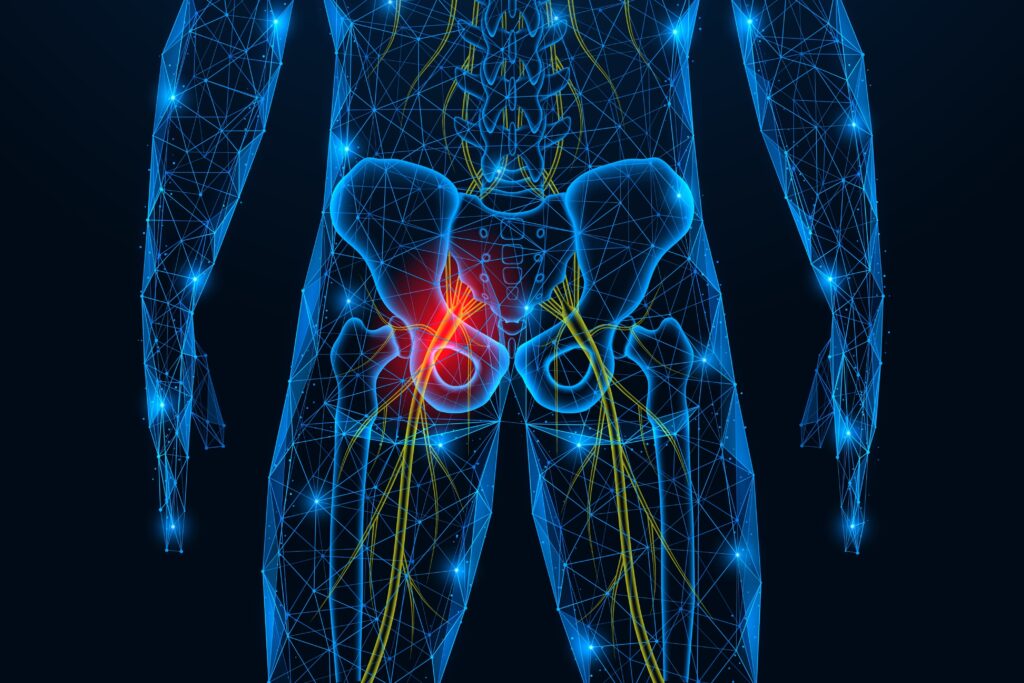
Sciatica refers to pain that radiates along the path of the sciatic nerve, which branches from the lower back through the hips and buttocks and down each leg. It is typically caused by compression or irritation of one or more of the lumbar or sacral spinal nerve roots that make up the sciatic nerve.
According to the Cleveland Clinic, about 40% of people in the U.S. experience some form of sciatica during their lifetime. It rarely happens before age 20, unless it’s injury-related.
Key Features of Sciatica:
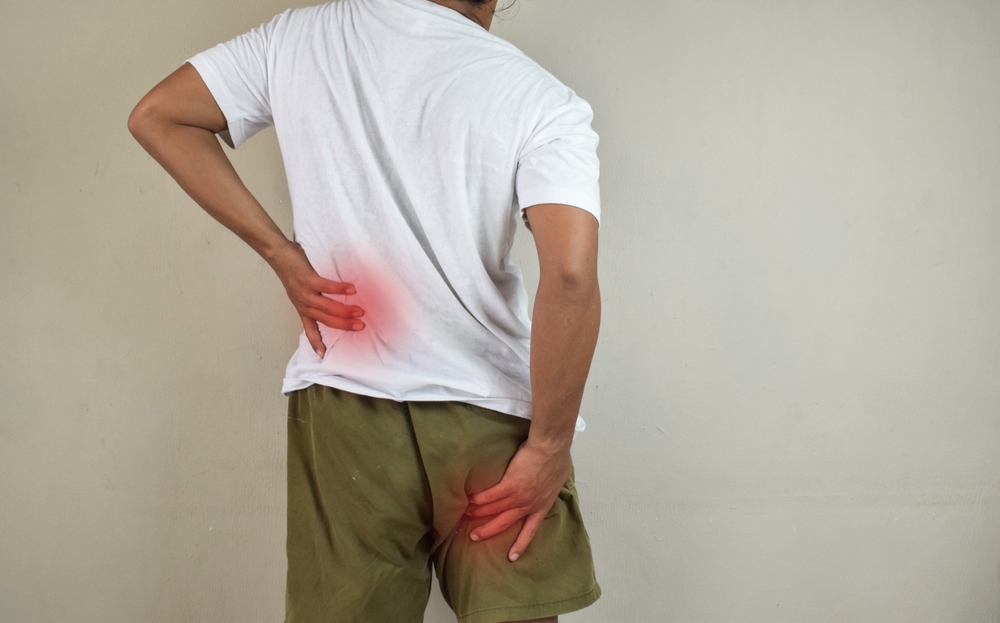
Sciatica can show up in a variety of ways, often depending on the individual and the underlying cause. It tends to affect one side of the body and may come and go or linger for extended periods. Some people describe it as a dull ache, while others experience sharp or shooting sensations. These features can shift over time, making sciatica difficult to predict or manage without guidance.
- Typical location: Low back, buttock, and down the leg to the foot and toes (following the sciatic nerve path).
- Symptoms: Sharp, shooting pain, numbness, tingling, or muscle weakness that usually affects only one side of the body.
- Common Causes: Herniated lumbar disc, spinal stenosis, piriformis syndrome, or other causes of nerve root compression (back muscle strain, spasm, or cramp). Sciatica mainly affects adults aged 30 to 50 and is more common in those with sedentary lifestyles or physically demanding jobs involving repetitive lifting.
Read More: Read This Before Ever Stretching Again (and that includes for your back and sciatica pain)
What Is Spinal Stenosis?
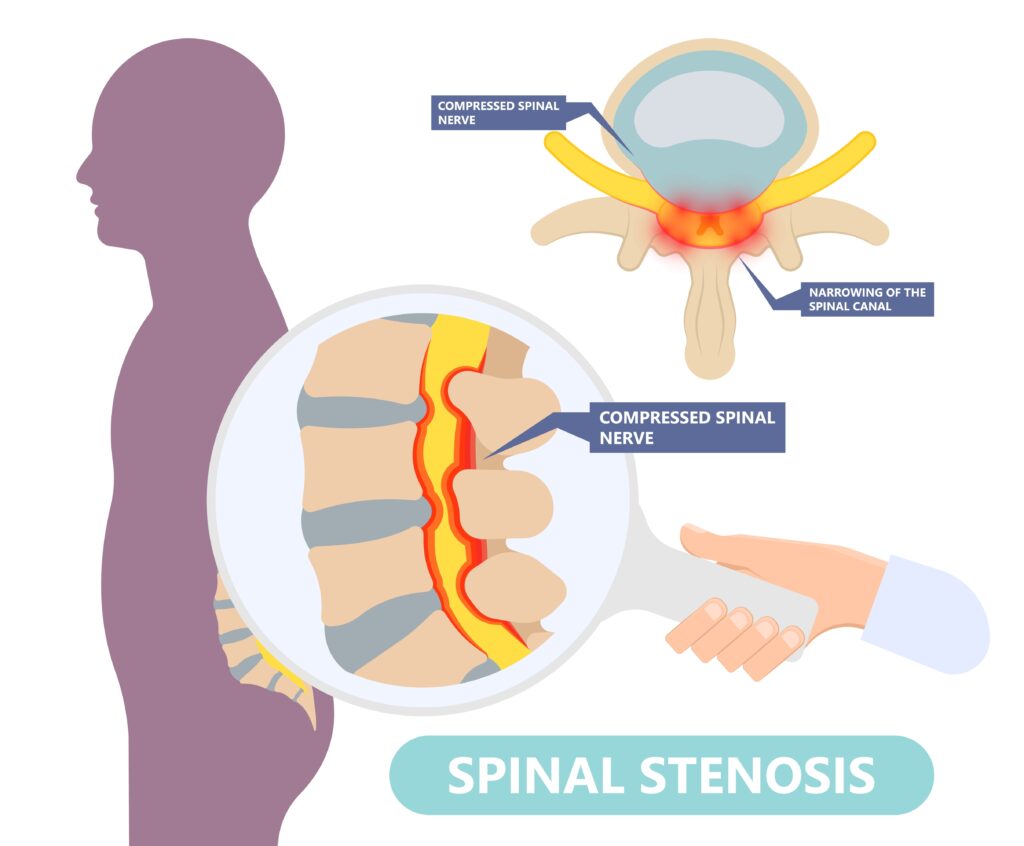
Spinal stenosis is a structural condition where the spinal canal narrows, compressing the spinal cord and/or nerve roots, usually in the neck (cervical) or lower back (lumbar) regions. Lumbar stenosis causes pressure on nerves that travel into the legs, leading to pain, numbness, or weakness. These conditions are most common in adults over 50 and mainly arise from degenerative changes.
Key Features of Spinal Stenosis:

Spinal stenosis often presents with a range of symptoms that can vary widely from person to person. It may develop gradually, with sensations that are sometimes hard to pinpoint. Some individuals notice discomfort with movement, while others feel a general sense of weakness or pressure. These features may shift depending on activity levels and posture, making the condition challenging to define clearly.
- Typical location: Cervical (neck) or lumbar (lower back) spine, with lumbar stenosis being more common.
- Symptoms: Pain, numbness, tingling, or weakness in the legs or arms; difficulty walking or standing for long periods; symptom relief often occurs when bending forward or sitting. Severe cases may involve loss of bladder or bowel control.
- Common Causes: Age-related wear and tear (degenerative arthritis), herniated discs, thickened spinal ligaments, or spinal injuries. Lumbar stenosis often causes nerve compression, which can lead to sciatica.
How Are Sciatica and Spinal Stenosis Different?
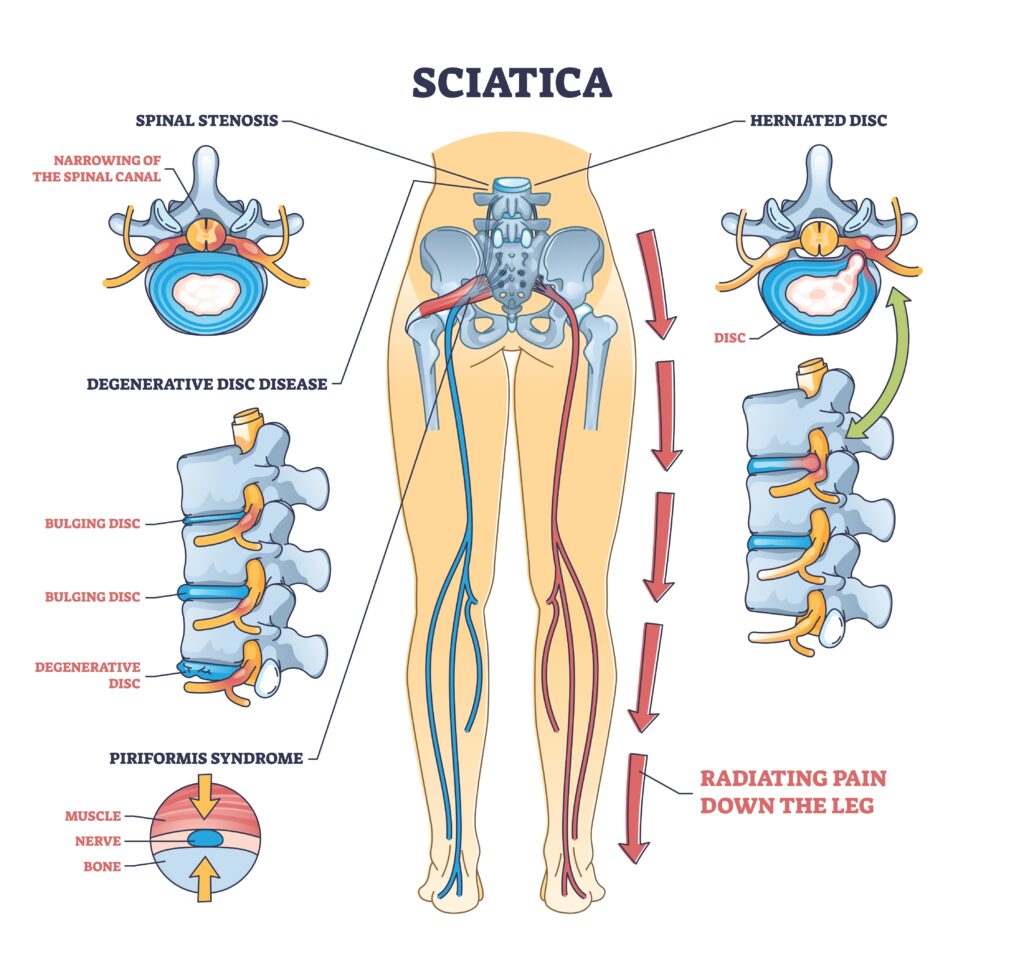
Sciatica usually comes on suddenly, often caused by a herniated disc pressing on a nerve. Spinal stenosis develops gradually over time due to age-related changes like arthritis or thickened ligaments that narrow the spinal canal. Pain from sciatica typically affects just one leg and feels sharp, burning, or shooting. Spinal stenosis often causes aching, cramping, or numbness in both legs (or the arms if the neck is involved), along with back pain.
People with sciatica often feel better when lying down or doing gentle movements, while those with spinal stenosis usually find relief when bending forward or sitting. Sciatica is more common in adults aged 30 to 50, whereas spinal stenosis tends to affect those over 50.
Diagnosing the Conditions

Diagnosing sciatica usually involves looking at a mix of symptoms and possible triggers. Doctors may consider different factors to get a clearer picture of what’s happening. Sometimes, additional steps are taken to rule out other issues. The process can vary, but it often starts with a conversation and a closer look at how the pain presents.
- Medical History and Physical Exam: Assess pain patterns, neurological function, reflexes, strength, and sensation to identify nerve root involvement.
- Imaging Studies: MRI is the best way to visualize nerve compression, disc herniation, and stenosis. CT scans and X-rays provide additional bone and canal details. Myelograms (CT with contrast) may be used if MRI isn’t feasible.
- Electrodiagnostic Studies (EMG/NCS): Occasionally used to assess nerve function especially when symptoms are prolonged or complex.
Due to overlapping symptoms and subtle presentations, misdiagnosis or delays are common. Making it ever more important to get specialist evaluation.
Treatment Options

Treatment for sciatica can look different for everyone, depending on the cause and how severe the symptoms are. Some people find relief with simple at-home approaches, while others may explore more guided methods. Over time, a combination of strategies might be needed. It’s often a process of finding what works best for each situation.
At-Home Care:
Gentle exercise (walking, stretching), heat/ice therapy, supportive cushions or shoes, and pacing activities can ease symptoms and prevent flare-ups.
Conservative Treatment:
- Physical Therapy: Strengthens core, improves flexibility, can help reduce nerve pressure.
- Medications: NSAIDs, nerve pain meds (e.g., gabapentin), muscle relaxants.
- Steroid Injections: May offer short-term relief from nerve inflammation.
- Lifestyle Changes: Weight management, quitting smoking, ergonomic adjustments.
Surgical Treatment is considered when conservative measures fail or neurological deficits progress:
- For sciatica from herniated discs, microdiscectomy involves removing the offending disc part to decompress nerves.
- For spinal stenosis, decompression surgery (laminectomy) removes bone or ligaments narrowing the canal, sometimes combined with spinal fusion to stabilize affected segments.
Read More: 7 Daily Activities That Are Aggravating Your Sciatica Pain
Prevention and When to See a Doctor

Preventing sciatica isn’t always straightforward, but certain habits may help reduce the chances of it developing or getting worse. Staying active, being mindful of posture, and listening to your body can all play a role. It’s a good idea to speak with a doctor if symptoms persist, become more intense, or start to interfere with daily life. Early guidance can often make a difference. Risk reduction strategies include maintaining a healthy weight, regular exercise to support spinal health, proper posture, and avoiding smoking.
Seek prompt medical evaluation if you have:
- Persistent or worsening leg pain, numbness, or weakness
- Difficulty walking or standing
- Loss of bladder or bowel control (urgent)
Takeaways
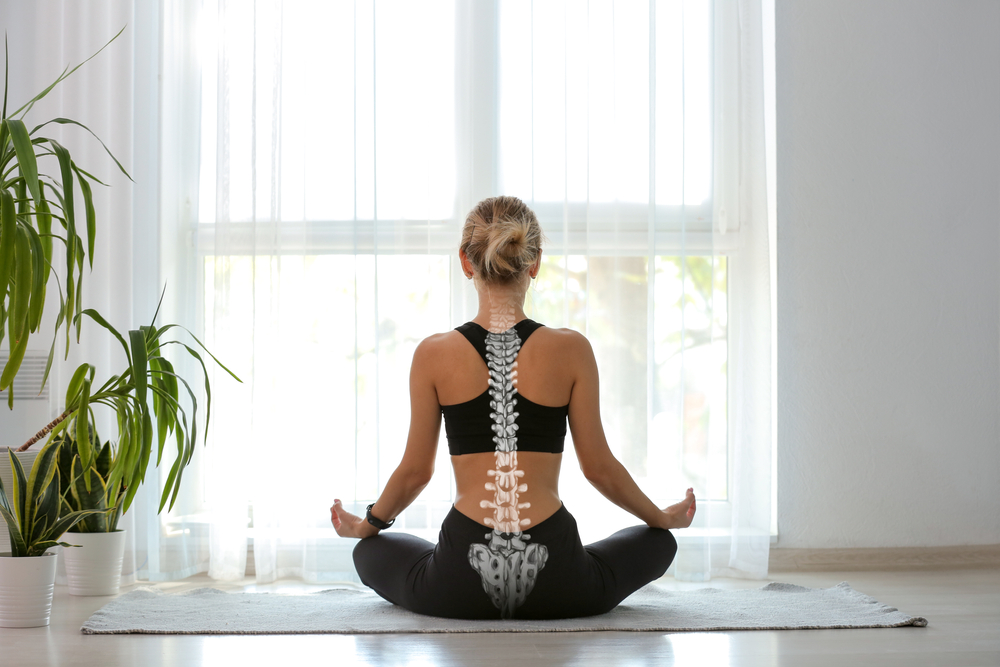
Sciatica and spinal stenosis are common causes of back and leg pain with overlapping but distinct features. Accurate diagnosis using clinical and imaging evaluations is crucial for effective management. Most patients benefit from conservative treatment, but surgery may be necessary for severe cases. Early attention to symptoms, lifestyle adjustments, and appropriate therapies can improve quality of life and prevent disability.
Disclaimer: This information is not intended to be a substitute for professional medical advice, diagnosis or treatment and is for information only. Always seek the advice of your physician or another qualified health provider with any questions about your medical condition and/or current medication. Do not disregard professional medical advice or delay seeking advice or treatment because of something you have read here.
This article was created with AI assistance and edited by a human for accuracy and clarity.
